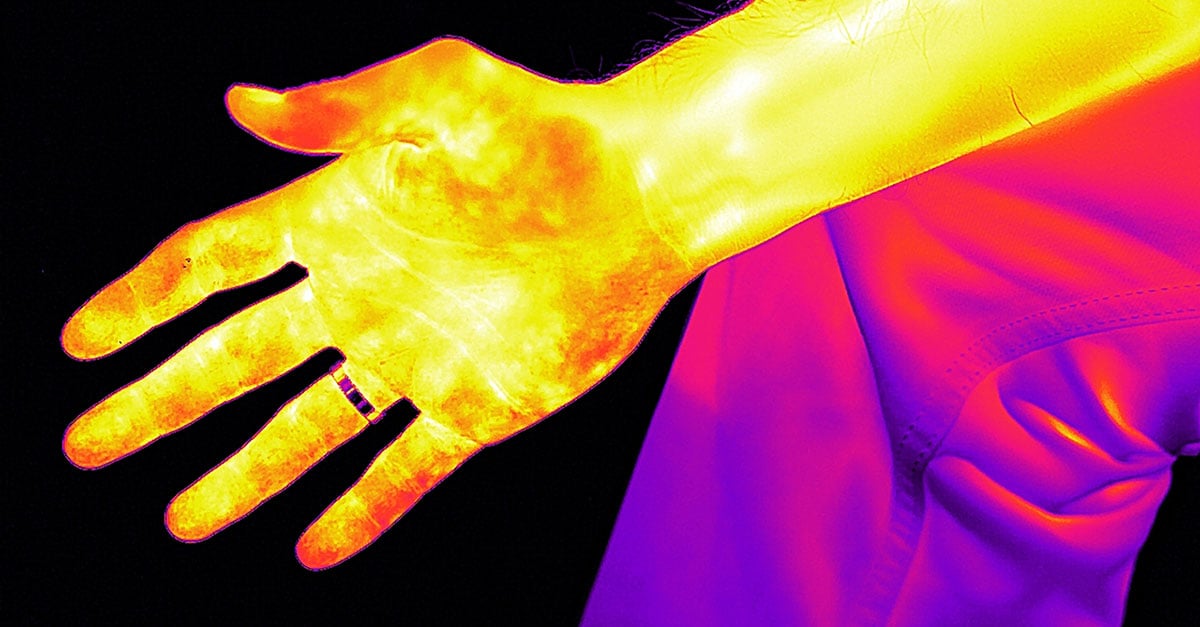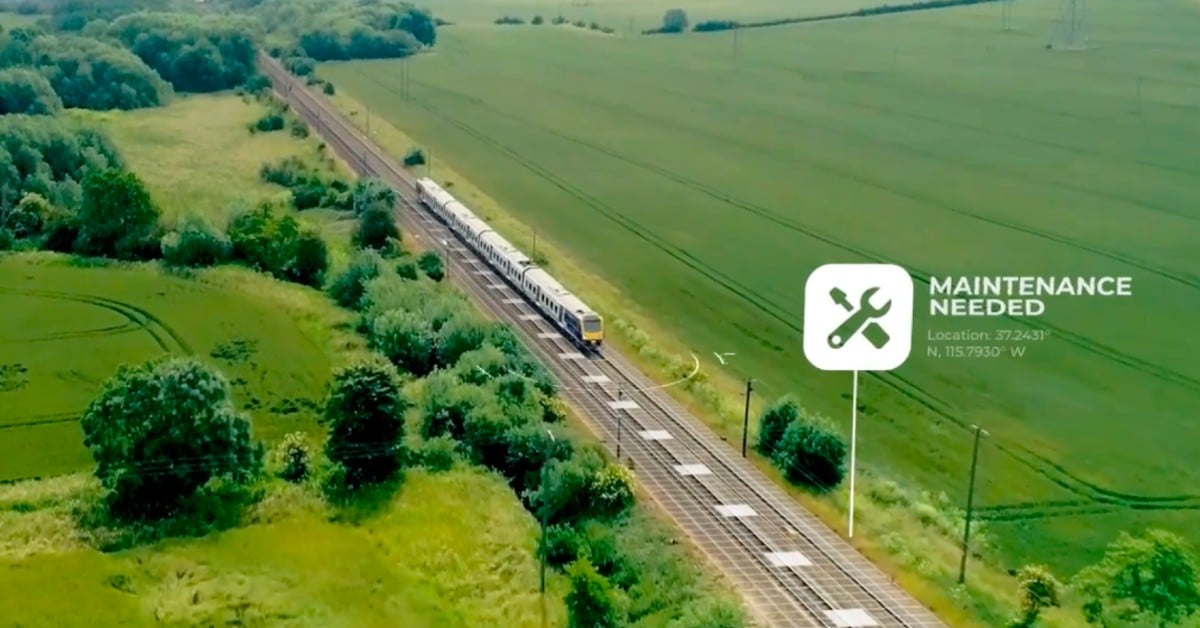Thermal Camera Specs You Should Know Before Buying

The number of specifications listed for a thermal camera can be overwhelming when you’re trying to find the right camera for your needs. Any spec in isolation won’t tell you much about the camera—instead, it’s a combination of factors that determine a thermal imager’s capabilities.
All specs provide useful information, but here are the main ones you need to consider to ensure you’re purchasing the right camera for your application:
Range
Range is the entire span of temperatures the camera is calibrated to and capable of measuring.
Some cameras have multiple ranges in order to more accurately measure a wider span of temperatures. Know the temperatures you’re likely to encounter in your application - selecting a camera with a higher temperature range is especially important for certain industrial applications, such as measuring high-temperature equipment like boilers, kilns, or furnaces.

Applications like measuring the temperature of kilns (left) require a camera with a high temperature range. When a camera is out of range, an * by the temperature indicates that the camera is guessing the temperature.
Field of View (FOV)
Field of View is determined by the camera lens, and is the extent of a scene that the camera will see at any given moment. For work being done close-up, you need a lens with a wide angle FOV (45° or higher). For long distance work, you need a telephoto lens (12° or 6°). Some cameras may be available with multiple lenses for different applications.
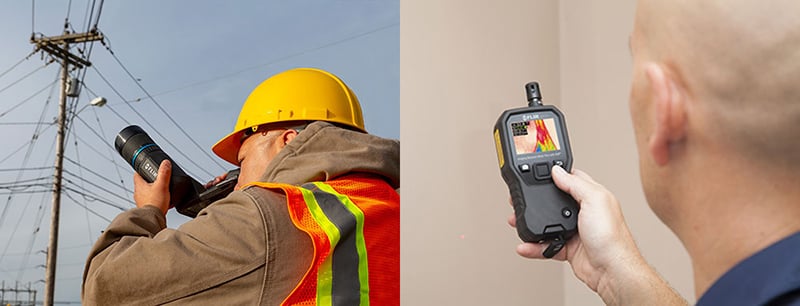
FOV determines how much the camera sees and from what distance. A telephoto lens is better for measuring at a distance (left), while a wide angle lens is better for close-up work (right).
IR Resolution
The resolution of the camera is how many pixels the camera has on the scene. Higher resolution means that each image contains more information: more pixels, more detail, and a greater likelihood of getting an accurate measurement. Depending on your application, especially when you can get close to the target, you may be able to get away with a lower-cost, lower-resolution camera. Measuring smaller targets from further away will require a higher resolution.
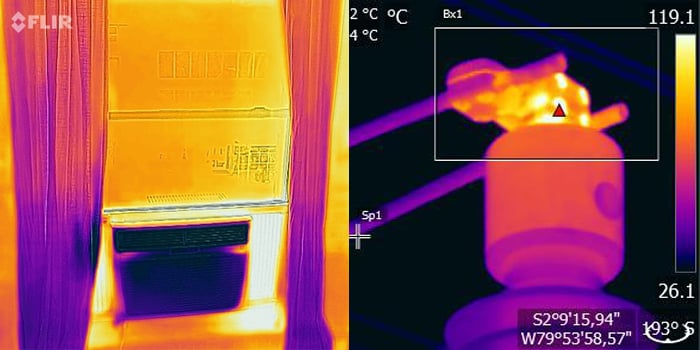
Low-resolution cameras are better suited to measuring targets at a close distance (left). A high-resolution camera is required for measuring at a distance (right).
Thermal Sensitivity (NETD)
Thermal sensitivity or Noise Equivalent Temperature Difference (NETD) describes the smallest temperature difference you can see with the camera. The lower the number, the better the thermal sensitivity of the infrared system. A word of warning: cameras from low-cost manufacturers may be hiding poor sensitivity by taking NETD at 50°C instead of the industry-standard 30°C.
If the targets you need to measure typically have wide temperature differences, a camera with a low NETD probably isn’t necessary. However, for more subtle applications, like detecting moisture issues, you will need more sensitivity.
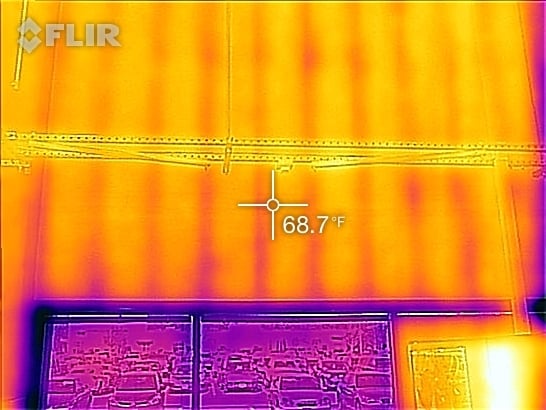
Detecting subtle details, like studs in a wall, requires high thermal sensitivity.
Focus
Cameras may be fixed focus, meaning they are always in focus; have manual focus, meaning the user adjusts the focus on the camera; or automatic focus, meaning the camera will autofocus based on what it can see for contrast on the scene. In general, more entry level cameras will have fixed focus, and high-performance cameras will have either manual or automatic focus. The advantage of manual vs. automatic focus comes down to user need.
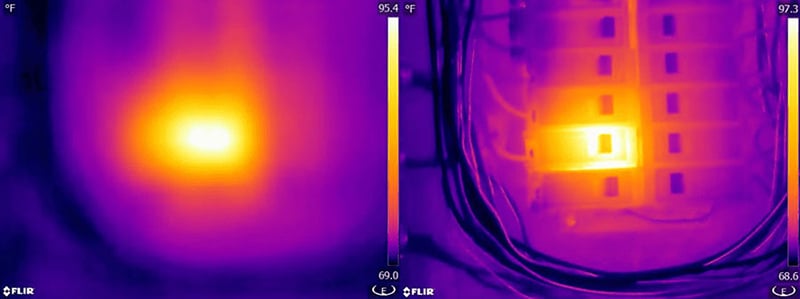
An image in focus is required for accurate temperature measurement.
Spectral range
Spectral range is the range of wavelengths that the sensor in the camera detects, measured in micrometers (µm). Most gas detection cameras (such as propane, methane, and butane detectors) are midwave cameras, meaning they have a spectral range of 3µm to 5µm. Almost all other thermal cameras are longwave, and have a spectral range of 8µm to 14µm. Longwave cameras are appropriate for most other applications, from electrical inspections to firefighting.
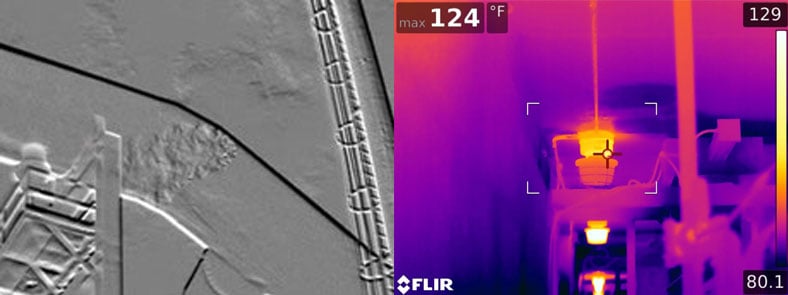
Midwave cameras are used to detect gases like propane, methane, and butane (left), while longwave cameras are used for most other applications (right).
Keep these important specs in mind when determining which thermal imaging camera is the best for your needs. Remember, looking at just one spec value won’t give you a good indication of a thermal camera’s capabilities. For instance, if you need to detect subtle issues like moisture, having high resolution won’t do you any good if the camera doesn’t also have high thermal sensitivity.
If you need a place to start, check out the FLIR Exx-series for a good general purpose handheld camera. For long distance electrical or utility work, take a look at the FLIR T-series, and for close up work or for an entry-level choice, consider a lower-cost camera like the FLIR ONE Pro or FLIR C3.
![]()

